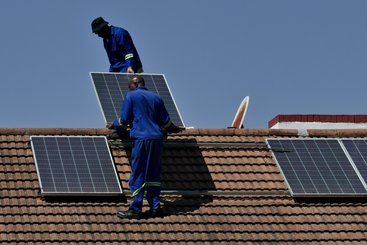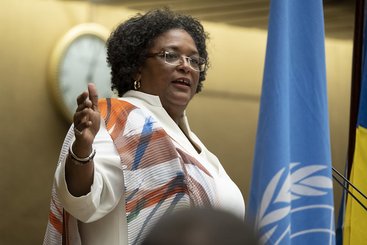Whilst the Paris Agreement drew attention to the role of carbon markets, the interface between climate finance and trade policy continues to be neglected.
This is despite recognition by the climate community of the potential for the framework agreed under Article 6 of the Paris Pact to unlock new sources of climate finance. Leveraging climate finance is key for developing countries, especially in Africa, which accounts for 72% of all Least Developed Countries (LDCs).
Several issues concerning carbon markets remain unresolved ahead of the forthcoming COP28 climate summit of the United Nations Framework Convention on Climate Change (UNFCCC). These include coverage and whether carbon removals will be included. There is also a need to ensure effective governance to avoid double counting certified emissions reductions (CERs) and, more broadly, ensure environmental integrity.
For LDCs that were unable to benefit from the Clean Development Mechanism (CDM) under the Kyoto Protocol, the new framework potentially provides for important new trade opportunities in carbon, and therefore the ability to secure climate finance. However, market access must be secured. In addition, technical as well as financial barriers to realise these new opportunities must be overcome.
International carbon markets are considered a vital component of the Paris Agreement and climate policy, they do not feature prominently within trade policy discussions at the multilateral level. The international trade policy community is more preoccupied with a defensive approach in view of the imminent application of border carbon adjustment (BCA) measures imposed by the European Union (EU). Absent so far from the current deliberations, however, is a broader focus on international carbon markets.
There should be a much stronger spotlight on the progress being made within international carbon markets. Developing carbon markets, for example domestic emissions trading schemes, may not only be a route to mitigate BCAs, but may also allow for higher mitigation ambition. In addition, and this is essential for LDCs and other developing countries, carbon markets can help to finance the green transition and sustainable development by generating revenue.
Actions to support the development of sovereign carbon markets under Article 6 of the Paris Agreement will help raise additional climate finance because of the levy on carbon market transactions for adaptation, which can strengthen climate-resilient development: 5% of all credits under Article. 6.4 will be given to the Adaptation Fund – a major increase from the 2% levy under the Clean Development Mechanism. These issues, which are especially pertinent to Small Island Developing States (SIDS), deserve greater attention.
The Africa Carbon Markets Initiative, launched at COP27, aims to produce 300 million carbon credits annually, unlock $6 billion in revenue, and create 30 million jobs by 2030. The West African Alliance on Carbon Markets and Climate Finance (WAACMCF), aiming to ‘participate in international carbon markets, benefit from technology transfer and access result-based climate finance for NDC implementation’, is an example of regional collaboration intended to harness the potential of carbon markets.
At COP27, Switzerland and Ghana announced the first authorisation of internationally transferred mitigation outcomes. Switzerland installed efficient lighting and cleaner stoves in Ghana so that up to five million households will no longer need to burn carbon-polluting wood for cooking. Switzerland can now count those emission cuts in Ghana towards its own goal of halving Swiss greenhouse gas output by 2030. Switzerland has signed similar agreements with 10 other low-income countries.
Looking ahead, it will be of the utmost importance to conclude the UNFCCC methodologies being agreed under Article 6 at COP28 by 2024. The absence of discussion on carbon markets in the World Trade Organization (WTO) may partly reflect the fact that the rulebook of the Paris Agreement is still being finalised. At the same time, however, there are compelling reasons to improve the interface between carbon markets, climate finance and trade policy. For example, as trade becomes more integrated within Nationally Determined Contributions (NDCs) under the Paris Agreement, the role of carbon markets and their trade-related implications must be clarified by more systematic engagement between the WTO and UNFCCC.
Specific areas that could be pursued include ensuring that WTO principles on market access are considered within carbon markets, such as non-discrimination and national treatment. In addition, specific market access arrangements for SIDS and LDCs could also be considered given their high vulnerability to the physical effects of climate change, along with support to access new carbon trade opportunities. This may require a new role for aid for trade, but could also have implications for technology transfer.
As we reflect on the Africa Climate Summit, it is evident that there is a significant need to garner greater momentum for support to sovereign carbon markets, as outlined in the Paris Agreement. The key goal is to secure urgently needed climate finance, particularly for adaptation efforts.




